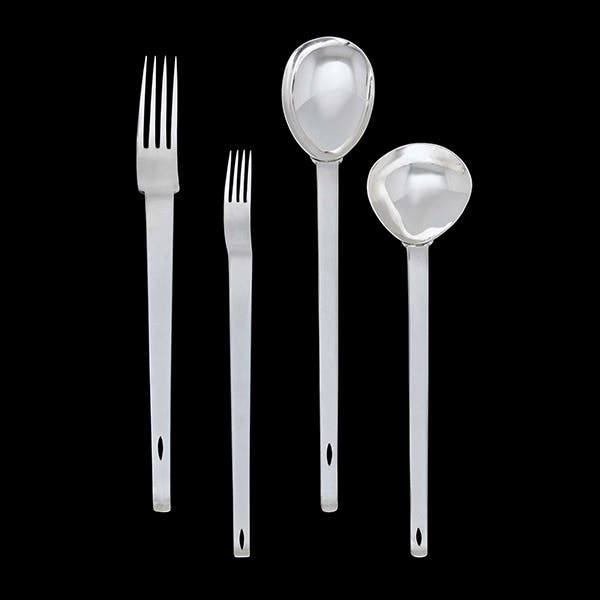Ancient and folk art headlining Aug. 25 sale
Artemis Gallery will present a myriad of ancient antiquities and art, during a 400+ lot auction slated for Aug. 25. Among the lots expected to prompt a bidding battle is an ancient polychrome-painted clay Egyptian ushabti figure.
BOULDER, Colo. – Artemis Gallery will present an expertly curated auction of antiquities,
ethnographic and Latin American folk art on Thursday, Aug. 25. Bidding on all lots will be accepted in person, and via absentee, phone, and on the Internet at LiveAuctioneers.
Of the more than 400 lots on offer, Ancient Egyptian treasures start things. The auction opener is an intriguing ovaloid hand-coiled pottery grain measure. Using kilning techniques from 3500-3200 BCE Egypt and silt from the Nile, the vessel came to fruition. It reflects similar aspects of examples of the kilning process described by the British Museum following their excavation at Hierakonpolis. Boasting an orange/red and black pigment exterior, the painted pot stands 9 1/2 inches high and carries an estimate of $1,500 to $2,000.
Egyptian Antiquities Poised to Top $2K
The polychrome-painted clay Egyptian ushabti in Lot 10 is one of five examples in this sale. The lot dates to the Third Intermediate Period, circa 1070-712BCE. Ushabti figures, often found in tombs, are representative of the belief that manual labor would need to be done in the afterlife. The example in Artemis’ auction stands 7 3/4 inches tall and could command a selling price in the $2,000-$3,000 range.
A pottery pinochoe with red-figure artwork, a strap handle and pinched rim, dating to 430-300 BCE Magna Graecia (southern Italy) at Lot 19, is one of several Greek antiquities. The subject of the piece is the god Eros, a heavily muscled, winged young man shown naked with the exception of jewelry, and the estimate is $2,500 to $3,500. Other Greek highlights include: Lot 20, a magnificent ribbed and lidded pyxis with iridescent glaze, $1,200-$1,500; and Lot 26A, an ancient Daunian polychrome askos with avian face, $900-$1,400.
Lot 38 is a stellar example of the redware pottery of 3rd-4th century CE Roman North Africa, one of the wealthiest provinces of the Roman Empire. The material from which the vessel is made is known as African terra sigilata. It is decorated with filigree leaves and animal forms, including rabbits, birds and serpents. It has an estimate of $2,500-$3,500. Another standout is Lot 35, a Roman bronze-applique actor’s mask form depicting a young man’s face adorned with elaborately styled hair and wearing a peaked hat. The lot carries an estimate of $900 to $1,400.
Emperors, Goddesses and Buddhas Represented
The Near Eastern selection includes Lot 47, a large (more than 23 inches long) and well-formed
cast-bronze sword, circa 1000 BCE, from the region of Luristan, valued at $2,000 to $3,000; and Lot 53C, a captivating hammered gold solidus coin from Constantinople. Featuring the bas-relief image of an emperor, and dating to 457-474 CE, the coin is expected to make $1,800-$2,500.
The mystical multi-armed Indian goddess Pala appears in relief on a black schist panel, Lot 59, with an estimate of $1,500-$2,000. Meanwhile, Lot 59A is a vertical stone carving of three 5th-century CE Buddhas in full lotus position, with an estimate of $1,200 to $1,800. In terms of a harmonious matching of color with artistry, however, the prize goes to Lot 71, a gorgeous circa-19th-century CE dowry necklace. Comprised of graduated round, polished pigeon blood rubies interspersed with 18K gold beads, it further boasts a center pendant of eight cabochon rubies. Rounding out this section is a 16-inch-long necklace, with an estimate of $2,000 to $3,000; and a life-size 18th-century painted white marble head of a serene Buddha, origin Burma, carrying an estimate of $2,500-$3,500.
Set to command between $2,000 and $3,000 in the sale is Lot 113, an early Papua New Guinea woven Abelam Yam ancestral mask from the first quarter of the 20th century. Made of bark, the mask is affixed to an old seashell.
Sale of Central American Artifacts to Benefit Museum
With a line of distinguished provenance that includes the 11/14/73 auction at Sotheby’s Parke Bernet, Lot 80 is a Pre-Columbian Peruvian (Moche III, circa 350-500 CE) portrait vessel depicting a face with pronounced features, draped in a cowl or headdress. It heads into the auction with an estimate of $1,200 to $1,500. In addition to the examples of Pre-Columbian pottery, the auction features an ancient hand-made jewelry item from Costa Rica’s Guanacaste/Nicoya region, circa 1-500 CE. Entered as Lot 81, the dark green carved jade pendant is topped by two zoomorphic heads, while the lower section is decorated with images of five human heads with drilled eyes and string-cut facial features. Its estimate is $1,500-$2,500.
Drawing from 1,000-piece collection is a selection of Central and South American folk art in this auction. The Fowler Museum at UCLA will receive a portion of the proceeds from these items. Among the highlights are: Lot 209, an early 20th-century Mexican wood child’s chair; Lot 215, an Ed Mann 20th-century painted-wood depiction of Jonah and the Whale; Lot 217, a pottery Colima dog with mask; and Lot 220, an early 20th-century Guatemalan dance mask depicting a man’s face with moustache and glass eyes.
Each and every item in this auction, as in all Artemis Gallery auctions, is unconditionally guaranteed to be authentic, as described, and legal to acquire per federal guidelines. A certificate of authenticity will accompany each purchase.
The sale begins at 11 a.m. Eastern Time. For additional information on any item, call Teresa Dodge at 720-890-7700, email teresa@artemisgallery.com, or visit http://www.artemisgallery.com.








